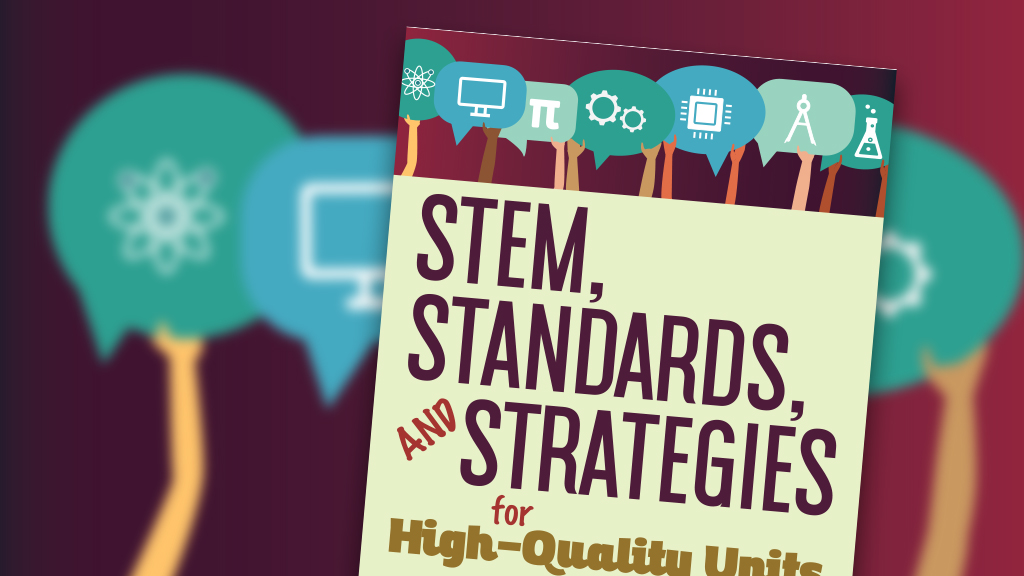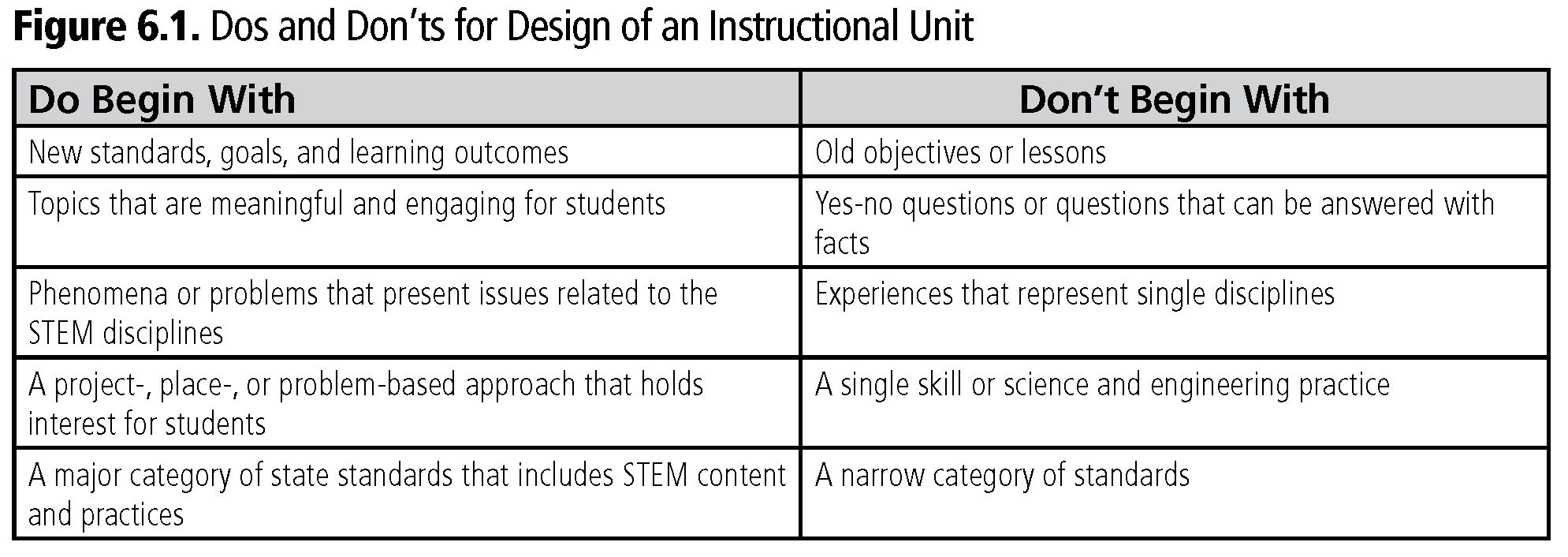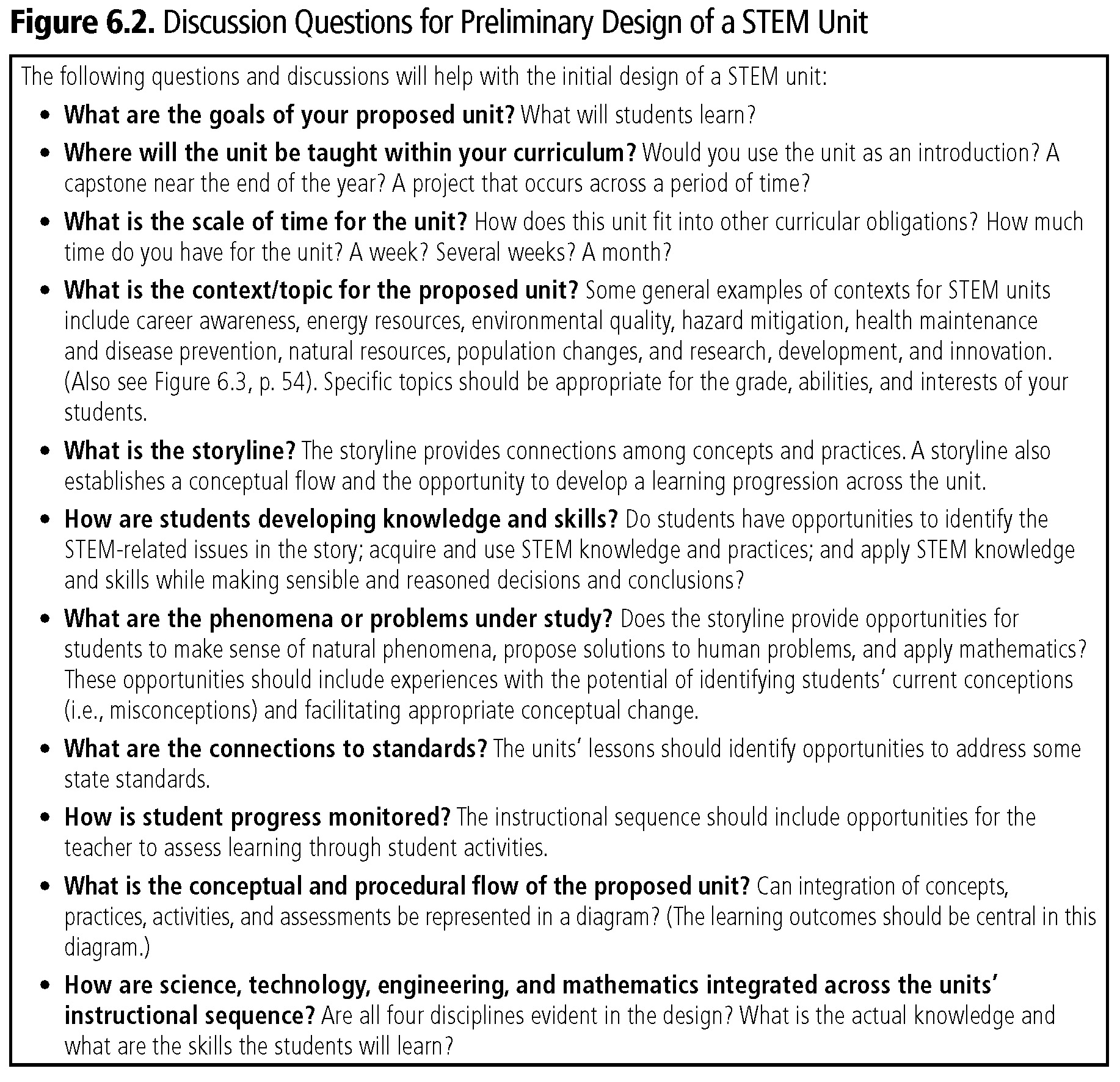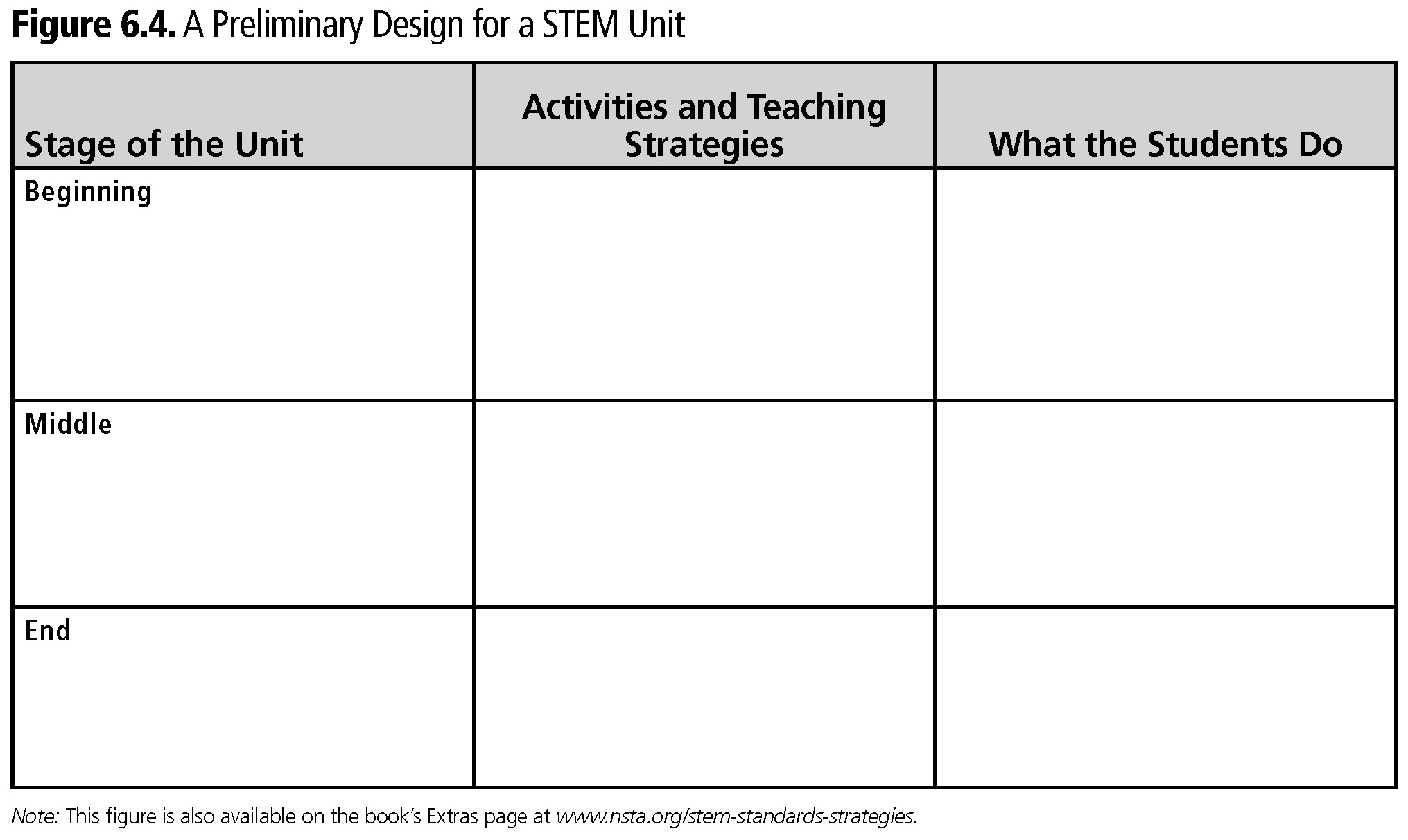NSTA Press Excerpt
An Initial Engagement: Preparing a Preliminary Design
By Rodger W. Bybee

NSTA Press publishes high-quality resources for science educators. This series features just a few of the books recently released. This excerpt is from STEM, Standards, and Strategies for High-Quality Units by Rodger W. Bybee, edited for publication here. NSTA Press publications are available online at the NSTA Bookstore.
Getting Started on Your Design
Designing a contemporary STEM unit for a grade or course will require you (and your PLC team) to engage with multiple questions and considerations. One key question is as follows: How would you plan a STEM unit for your students? Responses to this question will bring forth issues about the unit. For example, approaches for the design may begin with a big-picture or step-by-step perspective; they can begin with a new unit or current unit you will adapt; or they can begin with a lesson or a yearlong program.
Even though I am mindful of the various approaches to the initial design and eventual development of instructional materials, I nonetheless have specific suggestions based on my collective experiences. To the question of a big-picture versus small-steps perspective, I have attempted to identify a mid-range view—begin with a unit. As to the question about creating a new unit versus using a current unit, I think there will be greater opportunities for creative approaches and fewer constraints by initiating work on an original unit. Finally, I think that a lesson represents too little time and too limited an opportunity to create needed and adequate instructional strategies. And
thinking about and developing a new yearlong program can be too overwhelming with regard to time, content, and complexity. In summation, I believe starting with a new unit will render the best results.
In addition to my aforementioned recommendations, I have put together a list of suggested dos and don’ts (Figure 6.1) to help guide you in beginning your preliminary unit design.

Some Specific and Basic Questions
What are the unit’s learning outcomes? What is the unit’s context? What is the larger phenomenon or problem? How long should the unit be? What about state standards and assessments? Responding to these and other questions should challenge your thinking about what STEM implies, how your unit might connect to standards, how the unit relates to the interest and abilities of your students, and how such a unit differs from and complements current lessons and units you teach.
As you begin the initial design of a STEM unit, questions such as those in Figure 6.2 provide an orientation for your consideration.

The questions in Figure 6.2 present opportunities to discuss important aspects of instructional units with your colleagues. Not all the questions may be appropriate to your situation, but some—for example, the questions related to goals, topics, timing, location of the unit in the curriculum, and connections to standards—will no doubt apply.
I also recommend using a place-, project-, or problem-based approach for your unit.
Though your choices may seem simple and obvious, making some concrete preliminary decisions about details such as your unit’s contexts will be very helpful as you progress to the next step—preparing an initial sketch of your unit.
I also recommend reading sections of A Framework for K–12 Science Education (NRC 2012), your state’s science standards, and the Next Generation Science Standards (NGSS Lead States 2013) with reference to topics, content, practices, and learning progressions. This will help you locate your unit within the current curriculum program and understand where the unit has vertical alignment with your school curriculum.
Preparing a Preliminary Unit Design
Using a simple framework such as the one displayed in Figure 6.4 will help organize the student activities and teaching strategies in the initial design of your unit. Based on your decisions, you might identify unit topics, grades, and location within the suggested curriculum.

NGSS STEM Teaching Strategies Middle School Elementary High School


